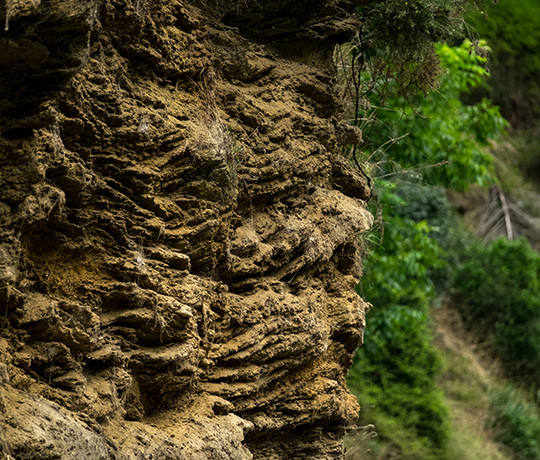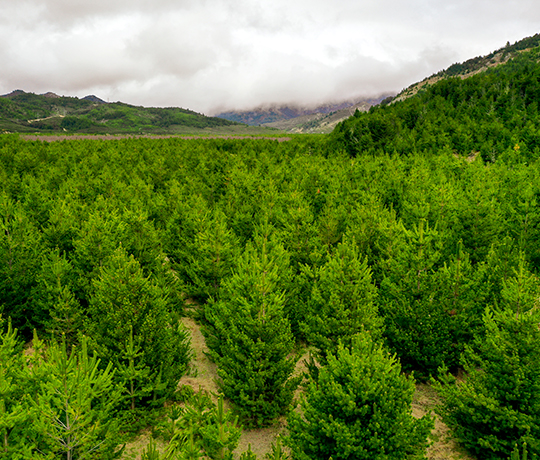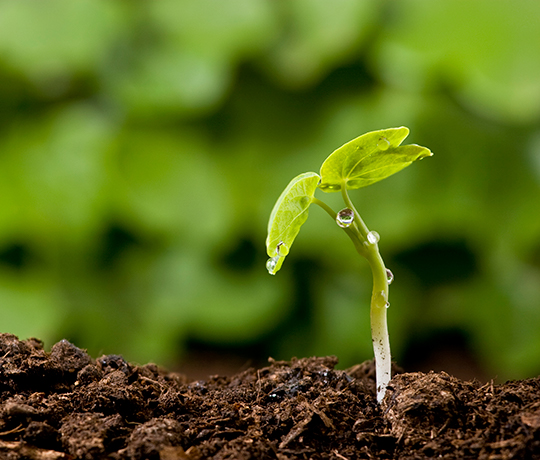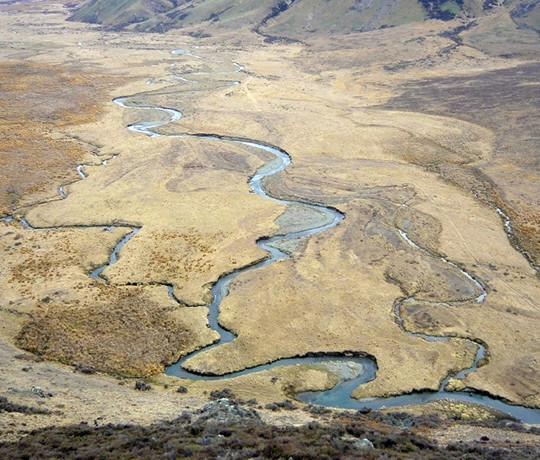Soil minerals: a stable footing
An architectural composition
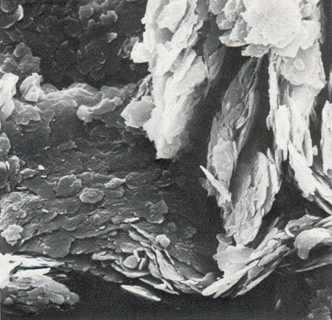
Nature is a great architect – and so it is in soils: The mineral body of soils is the scaffolding of all soils (except peat soils which are composed of organic matter). Its building blocks are inorganic minerals, rock fragments and water-soluble salts forming a unique composition that makes up around half the total soil volume1.
Not only does the mineral design determine the soil’s stability, but the arrangement of mineral particles also defines the configuration of the soil pore space in which water percolates and gases diffuse.
Minerals create the fundamental unit of soil architecture and are always soil-specific. Whether developed on sandy sediment, gravelly greywacke or porous pumice, the soil parent material and the environment in which a soil formed define its mineralogical composition.
A scanning electron microscope (SEM) image of mica, a primary mineral. It forms into secondary illite during weathering. Copyright: Manaaki Whenua – Landcare Research.
Weathering processes (rain, radiation, gravity) cause rocks to disintegrate over time, from solid bodies to fragments, and then to primary minerals, which still mirror the initial crystalline structure of the parent material2. Secondary minerals, in contrast, are soil-born. They are new minerals produced by chemical alterations and transformations in the soil profile itself: clay minerals as well as oxides.
Both primary and secondary minerals are active members of the soil environment. In interaction with each other, the elements the mineral structure is composed of create an electrical charge, which means soil minerals can adsorb plant nutrients like potassium and calcium on their surface. With a change in chemical conditions, nutrients and other compounds can be released back into the soil solution, where they become available to plant roots and soil organisms.
Soil minerals may also bind to organic compounds, and in this way they support the storage of carbon underground. The mineral base of soil is both fascinating and varying – and always forming an individual architecture that differs from soil to soil.
Texture with touch
Dirty fingers and muddy hands – soil scientists like getting down and dirty. This is because they can identify the mineralogical composition of soil simply by 'handling' it: The relationship between particle mineralogy and particle size is revealed when soil is squashed or rolled between two fingers.
Using a sieve, visual examination, or their own hands, soil scientists generally distinguish coarse fragments (everything over 2 millimetres in diameter, or about the width of a grain of rice) from fine earth (particles under 2 millimetres in diameter).
The fine earth of soil contains different ‘fractions’, which are distinguished by their size, shape and surface area.
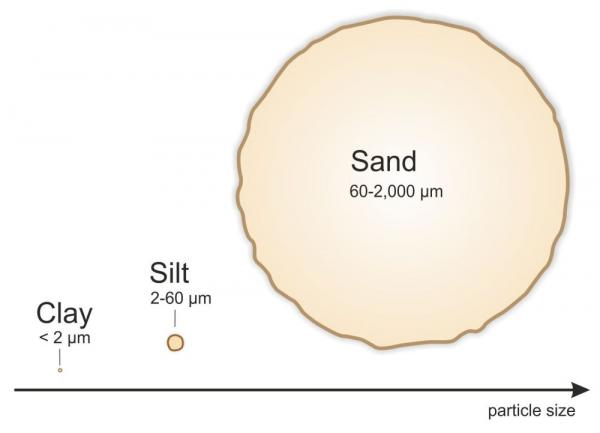
Sand particles (60 to 2,000 µm)3 are the largest unit, followed by silt (2 to 60 µm) and the clay fraction (less than 2 µm)4. Clay particles result from the formation of secondary minerals, whereas sand grains mainly consist of quartz, a primary mineral. Silt contains intermediate amounts of both primary and secondary minerals.
Soil generally includes a mixture of all the fine earth fractions: sand, silt and clay. The texture of one soil – or the ratio of sand, silt and clay present in a soil or soil horizon – may be very different from that of another.
Soils with a sandy texture, for example, provide enough pore space for water to freely percolate through the soil profile. A sandy soil promotes groundwater recharge, but it doesn’t adsorb as many nutrients as soils dominated by silt and clay, or as a balanced mixture of all three fractions, called ‘loam’.
The relative sizes of sand, silt and clay particles. Think of sand as the size of a basketball, silt a ping pong ball, and clay a grain of table salt. 2,000 µm = 2 mm. Source: Anne Wecking.
Textural differences define how soil overall ‘functions’ and what ecosystem services it can provide – apart from making soil feel different when touched. For a discussion of ecosystem services, see this section.
1 R Schaetzl, S Anderson 2005. Soils: Genesis and Geomorphology.Cambridge University Press.
2 Leser (2010). Woerterbuch Allgemeine Geographie. 14th edition. Used for general terminology and definitions
3 A micrometre (µm) is a millionth of a metre. A human hair is about 50 µm in diameter.
4 Milne et al. (1995). Soil Description Handbook, revised edition. Manaaki Whenua Press, Lincoln, NZ, p. 45.
